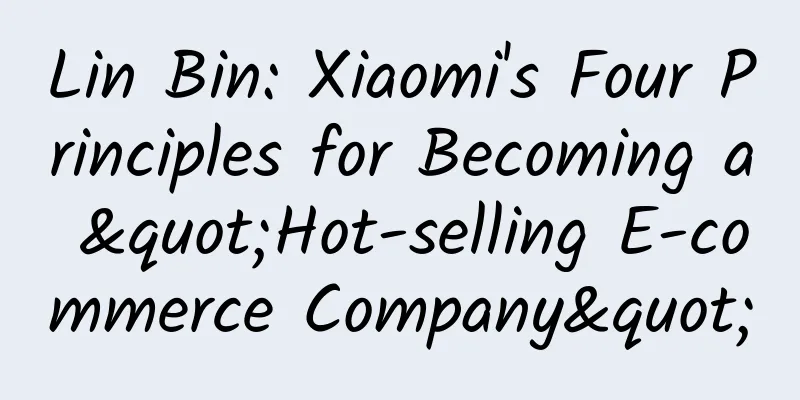PiaPia slaps her in the face! The truth is revealed after disassembling Qin L and Galaxy L6. Do domestic cars really cut corners?

|
The automobile market has been quite lively during this period, probably because BYD Qin L/Seal 06 were launched on the market, offering prices lower than expected, causing a strong backlash in the industry. All of a sudden, all kinds of opinions came out, and bigwigs from all walks of life stood up to accuse Chinese new energy manufacturers of cutting corners, disrupting order, and not understanding long-termism. There were even some weird remarks, saying that competitors were "cheating." The price of Qin L is indeed a bit outrageous. For a B-class car, the original expected selling price was around 120,000 yuan, but unexpectedly it was 99,800 yuan. My friends were all stunned, and even BYD dealers may not have reacted. So, is this car really cut corners to have such a low price? Where there is public opinion, there are people who like to do good things. Who doesn’t love traffic? Recently, a media outlet did a program: Qin L vs. Galaxy L6 to see if there is really any cutting of corners in domestic new energy vehicles. Qin L and Galaxy L6, one is a B-class car, and the other is an A-class car, but the price of Qin L is 99,800-139,800 yuan, and the price of Galaxy L6 is 99,800-159,800 yuan. The price ranges of the two cars are highly overlapping. There is basically no controversy when comparing these two cars. The results show that both cars performed relatively well. Qin L has obvious advantages in front anti-collision beam, passenger compartment, chassis, fuel tank, engine, gearbox, electronic control and interior soft furnishings, and its safety and comfort have reached a first-class level; while Galaxy L6 performs better in rear anti-collision beam, rear suspension and front suspension. The comparison results show that Qin L leads in 8 indicators, Galaxy L6 leads in 3 indicators, and the other 2 indicators are evenly matched. This result is also in line with the status of BYD and Geely. At present, BYD and Geely can be said to be the "big and small kings" in the field of plug-in hybrids. Why do the Qin L and Galaxy L6 perform better? This is because of different references. From the disassembly results, we can see that these two cars have surpassed joint venture brands of the same price in terms of chassis technology, anti-collision beams, workmanship, materials, and quiet performance. This is also in line with the actual experience of most users. The starting price of Qin L and Galaxy L6 is less than 100,000 yuan. What joint venture car can you buy with 100,000 yuan? Before the rise of domestic new energy vehicles, even the entry-level Fit was not available. The result of this comparison leads to a question worth discussing - are domestic cars really inferior to joint venture cars of the same price? In such a bad public opinion environment, domestic cars can succeed. There seems to be no other reasonable explanation except that the products are strong and cost-effective. Consumers pay money to buy cars, so they must know more about cars than those bigwigs in the car circle who talk a lot. Moreover, these are just fuel vehicles. In the field of new energy, joint venture vehicles and domestic vehicles are a generation behind each other. Many people attribute the rise of domestic new energy vehicles to policy promotion, which is actually nonsense. All of China's new energy industry policies do not discriminate against joint venture models. Subsidies, tax incentives, and priority road rights are all enjoyed by domestic new energy vehicles, and joint venture vehicles are also entitled to all of them. But so far, the joint venture manufacturers do not even have a new energy vehicle model that can enter the mainstream market, and their core technologies are a mess, so they are quickly abandoned by consumers. The business world is like a battlefield, food is the original sin, and so-called sentiments are just the nonsense of the ignorant. In June 2024, domestic sales of new energy passenger vehicles are around 860,000 units, a year-on-year increase of 32.7%, with more than 800,000 new car owners added in one month. This is the best proof that certain manufacturers must not think that they are smarter than users. You serve consumers, and consumers do not need you to teach them how to identify good cars. Then, how did BYD achieve such low prices ? In recent times, BYD has launched several rounds of price wars, which does seem a bit outrageous, especially for models like Qin L, which broke people's previous perception of car prices. However, the disassembly results show that the Qin L did not cut corners; the financial report data also shows that BYD's gross profit margin has exceeded 20%, which is higher than Tesla. How did BYD achieve low prices, high profits, and no cutting corners? This question is simple and can be answered using common sense from the automotive industry. First, BYD has been pursuing a vertical integration strategy since its founding. In addition to tires and glass, BYD can independently produce most other core components, which is unique in the new energy industry. The cost of purchasing from others is naturally different from that of handing over from one's left hand to the other. For a period of time in 2022, there was a chip shortage in the domestic new energy market. Many manufacturers were at a loss. Some were forced to suspend work and production, and some were forced to make surprise purchases at prices a hundred times the market price. These additional costs were astronomical, but BYD, which can produce its own chips, was hardly affected by this turmoil. In many cases, complex manufacturing industries such as automobiles are not afraid of low profits. What they fear is an unstable supply chain. BYD's supply chain is almost its own business. Secondly, BYD has a clear leading advantage in technology. Once a new technology is successfully developed, it will be quickly installed in vehicles and then sold in large quantities. The initial R&D costs are quickly diluted. This is the main reason why it dares to cut prices on a large scale. At the same time, BYD's technology upgrade speed is also quite fast. When new technology emerges, the original technology will quickly be transferred to low-end models, and then continue to use the new technology to make high profits. BYD's Yi Sifang platform technology has been released for more than a year, and there is still no competitor in the short term. Therefore, BYD can simply split and simplify this system and throw it into low-end models with a price of tens of thousands of yuan to continue making money. After the marginal utility decreases, the R&D cost of the technology can be ignored. Other manufacturers cannot do this. In fact, it is not just BYD, almost all technology-driven manufacturers do this. With technology in hand, cost control is naturally much easier. Only those joint venture manufacturers who rely on foreign brands to make a living by eliminating technology do not understand this. They are controlled by others in almost all key links and rely on others everywhere. If foreign capital sneezes, they will have a high fever. Therefore, if domestic cars want to surpass joint venture cars, there is no need to cut corners. They just need to strengthen independent research and development and follow the general development laws of the industry. There is nothing mysterious about it. It is just some common sense. A little research will reveal that those who equate the progress of domestic new energy with "cutting corners" are basically the following types of people: heads of joint venture manufacturers, foreign parts suppliers, and domestic brands with weak technology. These big guys have decades of experience in the industry, how could they not understand the development rules of the automotive industry? Moreover, if they really found evidence that some domestic brands cut corners, given the fierce competition now, they would have made it public long ago, and they would not have the time to talk nonsense online. If nothing unexpected happens, this wave of public opinion that smears domestic cars for cutting corners should be the biggest job these people can do in the next year. They will not be able to stir up such public opinion storms in the future. After all, after a period of time, they will get used to the strength of domestic new energy brands. Now they are still in the adaptation stage, and it is normal to have some stress reactions. Moreover, according to the current decline rate of joint venture cars, in three years... The question is, will they still be there in three years? As a winner of Toutiao's Qingyun Plan and Baijiahao's Bai+ Plan, the 2019 Baidu Digital Author of the Year, the Baijiahao's Most Popular Author in the Technology Field, the 2019 Sogou Technology and Culture Author, and the 2021 Baijiahao Quarterly Influential Creator, he has won many awards, including the 2013 Sohu Best Industry Media Person, the 2015 China New Media Entrepreneurship Competition Beijing Third Place, the 2015 Guangmang Experience Award, the 2015 China New Media Entrepreneurship Competition Finals Third Place, and the 2018 Baidu Dynamic Annual Powerful Celebrity. |
<<: 6 flagships comparison: Galaxy S6 beats iPhone 6
>>: 32 Android Phones Battery Life Competition: Mate 7 Wins First Place
Recommend
Android SurfaceView plays video source code
SurfaceView Let's first introduce how most so...
Inspired by Zhang Yitang, a 17-year-old boy solves the world's number theory problems
While studying the paper on the twin prime proble...
Zhihu operates the neglected traffic pool
I am one of the earliest users of Zhihu. During t...
This disease is widely hidden in the population, causing great harm, but few people know about it.
The cause of hypochondriasis is still unknown. Hi...
In-depth information | The most comprehensive guide to bidding OCPC advertising is online
Bidding OCPC is based on the long-term accumulati...
After the 300,000 subsidy threshold is established, where will China's new energy vehicle market go?
After experiencing nine consecutive declines, new...
Can an unmanned adult products store make money?
If we move the time back to five or even ten year...
Is producing content a process of draining yourself? Where will content startup unicorns emerge?
Your words, your knowledge, your voice, your look...
In-depth analysis: Operational strategies behind product cold start
Cold start - The state of a social product before...
HandyJSON: Swift language JSON to Model tool library
background JSON is a commonly used application la...
Sweating = detoxification and beauty? There is a kind of sweating that is very fatal. Knowing it earlier can save lives!
Hot! Hot! Hot! This year, hot and humid weather h...
In WeChat Moments: You are actually an actor
Goffman, a famous American sociologist, believes t...
While watching the World Cup, also check out this archaeological study on the origin of football!
While watching the World Cup, also check out this...
Honda China: Honda China sales in August 2023 were 102,000 vehicles, a sharp drop of 25% year-on-year
Recently, Honda China announced that its terminal...









